This article was medically reviewed by Erik Kramer, DO, MPH and by wikiHow staff writer, Christopher M. Osborne, PhD. Dr. Erik Kramer is a Board-Certified Primary Care Physician at the University of Colorado. With over 15 years of experience, his clinical interests include obesity and weight management, diabetes care, and preventive care, as well as embracing a holistic approach to primary care. He received his Doctorate in Osteopathic Medicine (D.O.) from the Touro University Nevada College of Osteopathic Medicine and completed his residency at Central Maine Medical Center. Dr. Kramer is a Diplomate of the American Board of Obesity Medicine.
There are 13 references cited in this article, which can be found at the bottom of the page.
This article has been viewed 465,339 times.
The prostate is a walnut-sized organ in males that plays a major role in the production of semen. The easiest way to access the prostate is by way of an index finger carefully inserted into the rectum. The processes for accessing the prostate as part of a medical exam (which should be done by a doctor) or for sexual pleasure are the same, and the same precautions should be taken. You should also keep an eye out for signs of potential prostate problems and contact your doctor as needed.
Steps
Touching Your Prostate with Your Finger
-
1See a trained professional if you want your prostate medically examined. Medical professionals do not recommend prostate self-exams. An “untrained finger” is unlikely to accurately recognize signs of problems, and there is a small but not inconsequential risk of damage to the rectum or prostate.[1]
- Talk to your primary care doctor to determine if you should have a DRE (digital rectal exam) to check your prostate.
- Check your prostate if you’re older than 40, have a high risk for prostate cancer, or if you have symptoms of an enlarged or infected prostates.
- If you want to access your prostate for sexual pleasure, take all the precautions described in this article and work very slowly and gently.
-
2Take a shower and clean “between the cheeks” thoroughly. Use soap, water, and a soft washcloth to clean the area as best you can, then rinse it out thoroughly with clean water from the shower. The cleaner you feel "up there," the less self-conscious you're likely to be when the time comes to insert your finger.
- Don’t use a rough washcloth or brush, scrub too vigorously, or try to clean deep into your rectum. You may damage the sensitive tissue in the area. Just accept that it’s not possible to get this area 100% clean.
Advertisement -
3Trim your nails and put on a sterile exam glove. Use nail clippers and a file to make sure your fingernails don’t have any sharp or jagged edges—this is especially important for the index finger you’ll be using. After that, wash and dry your hands and put a sterile exam glove onto the hand you’ll be using.[2]
- Even when you’re accessing your own rectum, it’s best to play it safe and wear a glove.
- If you wear a ring on the index finger you’ll be using, remove it.
-
4Apply lots of petroleum jelly or personal lubricant to your index finger. Doctors typically use petroleum jelly (like Vaseline) for this procedure, but a personal lubricant gel (such as KY Gel) works fine as well. In either case, don’t be shy about loading up the lubricant on your index finger![3]
- Your entire index finger should be fully coated from the tip down to at least the middle knuckle.
-
5Assume a comfortable position for accessing your rectum and prostate. In a clinical setting, a medical professional will likely have you lie down on your side with your knees brought up to your chest. It may be difficult to access your own prostate from this position, however. Alternatively, stand up and lean forward so that your hips flex outward.[4]
-
6Relax your rectum as much as possible. Do your best to remain calm and relaxed because your rectum will naturally tense up when you insert your finger, especially if it’s a new experience for you. It’ll be more difficult and possibly uncomfortable to access your prostate if your rectum is contracted.[5]
- If you’re at home, try putting on some relaxing music or doing a few deep breathing exercises beforehand.
-
7Insert the tip of your gloved and lubed index finger into your rectum. Work slowly and gently and try to remain calm and relaxed. Stop once your first knuckle—the one closest to your fingertip—is in your rectum.[6]
- While there are sexual pleasure devices designed to stimulate the prostate, use your finger the first few times until you get comfortable with the process.
-
8Aim your finger (without bending it) between your belly button and penis. Instead of going straight up your rectum, you need to angle your finger forward in order to access your prostate. Don’t bend your knuckles, but rather adjust the angle of your entire finger so it’s pointed in the proper direction.[7]
-
9Insert your finger deeper until you make contact with your prostate. Your middle knuckle will probably enter your rectum before your fingertip reaches your prostate. On contact, the prostate should feel soft and smooth, and you may feel a brief sensation like you need to urinate.[8]
- During a DRE, a medical professional will gently feel your prostate for about 5-10 seconds, checking for any bumps, growths, or unusual elements.
- For sexual pleasure, try gently massaging the prostate with your fingertip. It may take a few seconds, a few minutes, or longer for you to experience pleasurable results—but you’ll know them when they happen!
- In some cases, your finger may not be long enough to access the prostate—this happens to doctors doing exams about 6% of the time.[9]
-
10Withdraw your finger slowly and discard the glove. When you’re finished accessing your prostate, take your time sliding your finger out of your rectum. Once it’s out, grasp the base of the glove with your other hand and pull it off so it ends up inside-out. Toss the glove in the trash and wash your hands.[10]
Identifying Potential Prostate Problems
-
1Watch for urination-related symptoms of an enlarged prostate. Many men, especially age 50 and older, experience an enlarged prostate (a condition called either BPH or BPE). In most cases, it’s not caused by cancer, and many men have no symptoms. If you do experience symptoms like the following, however, contact your primary care doctor:[11]
- Weak flow during urination.
- Feeling like your bladder hasn’t emptied fully.
- Difficulty starting to urinate.
- Dribbling urine after you finish urinating.
- Needing to urinate more often, especially at night.
- Sudden urges to urinate that may cause leaks before you reach the toilet.
- Try taking a screening test to assess your symptoms here: https://www.bostonscientific.com/content/dam/bostonscientific-anz/patients/downloads/Enlarged_Prostate_Symptom_Score_Questionnaire.pdf.
Warning: Seek emergency care if you have significant difficulty urinating or if you’re unable to urinate since you’ll need immediate intervention to remove the obstruction.
-
2Stay alert for additional symptoms of prostate issues as well. In some cases, the symptoms associated with an enlarged prostate may indicate other prostate problems, such as infections, chronic prostatitis (prostate pain), or cancer. These conditions are often more serious than BPH/BPE alone, so keep an eye out for the following symptoms (in addition to those for BPH/BPE):[12]
- Blood in your urine or semen.
- Pain or burning during urination.
- Painful ejaculation.
- Frequent pain or stiffness in your lower back, hips, pelvic or rectal area, or upper thighs.
-
3Undergo testing and treatment in consultation with your medical team. If you’re having prostate problems, and especially if you have possible symptoms of prostate cancer, your primary care doctor or urologist will likely conduct a digital rectal exam (DRE), a PSA blood test, or both. From there, they may recommend ultrasounds, CT scans, and/or prostate biopsies to achieve a diagnosis.[13] While you should be an active participant in making your healthcare decisions, do not take expert medical advice lightly.[14]
- Some studies indicate that the DRE isn’t a perfect test for prostate cancer since it can be difficult to reach the front side of the prostate,[15] but many experts argue it is still a valuable test.[16]
- In some cases, even if you are diagnosed with prostate cancer, your medical team may advise a “watch and wait” approach. This is because some types of prostate cancer spread very slowly and the side effect risks of treatment (such as urinary and sexual function issues) are fairly substantial.[17]
References
- ↑ https://www.pcf.org/about-prostate-cancer/what-is-prostate-cancer/prostate-exam/
- ↑ https://www.pcf.org/about-prostate-cancer/what-is-prostate-cancer/prostate-exam/
- ↑ https://youtu.be/fUwLRtJN4Aw?t=135
- ↑ https://www.pcf.org/about-prostate-cancer/what-is-prostate-cancer/prostate-exam/
- ↑ https://youtu.be/fUwLRtJN4Aw?t=150
- ↑ https://youtu.be/fUwLRtJN4Aw?t=170
- ↑ https://youtu.be/fUwLRtJN4Aw?t=170
- ↑ https://youtu.be/fUwLRtJN4Aw?t=170
- ↑ https://www.ncbi.nlm.nih.gov/pmc/articles/PMC3302122/
- ↑ https://youtu.be/fUwLRtJN4Aw?t=180
- ↑ https://medlineplus.gov/ency/article/000381.htm
- ↑ https://www.nia.nih.gov/health/prostate-problems
- ↑ https://www.urologyhealth.org/urologic-conditions/prostate-cancer
- ↑ https://www.cancer.org/cancer/prostate-cancer/detection-diagnosis-staging/how-diagnosed.html
- ↑ https://www.cdc.gov/cancer/prostate/basic_info/screening.htm
- ↑ https://www.cancer.org/cancer/prostate-cancer/detection-diagnosis-staging/tests.html
- ↑ https://www.hopkinsmedicine.org/health/conditions-and-diseases/prostate-cancer/watchful-waiting-for-prostate-cancer



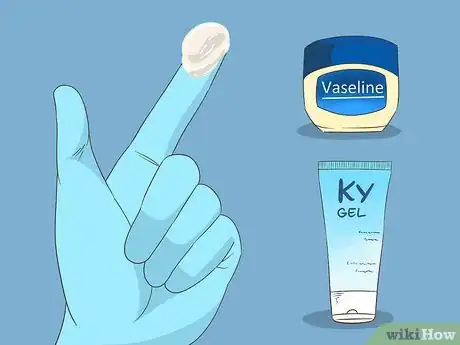
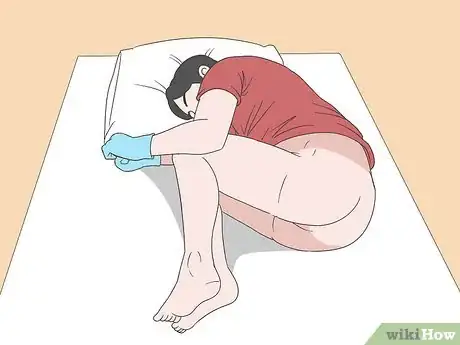
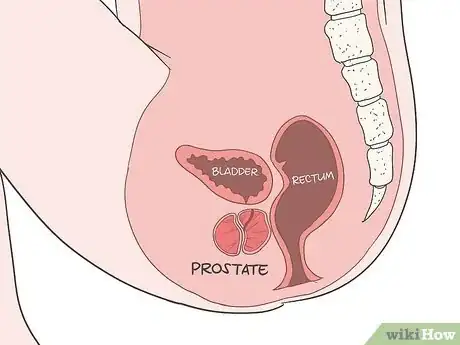

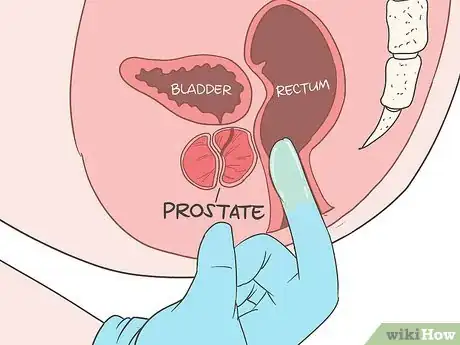
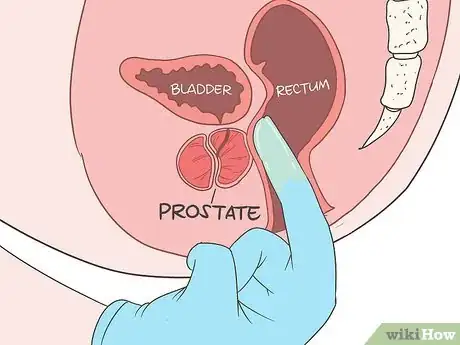
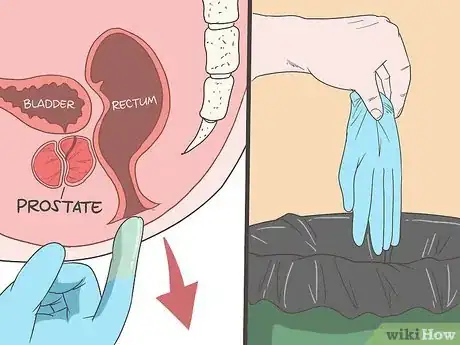

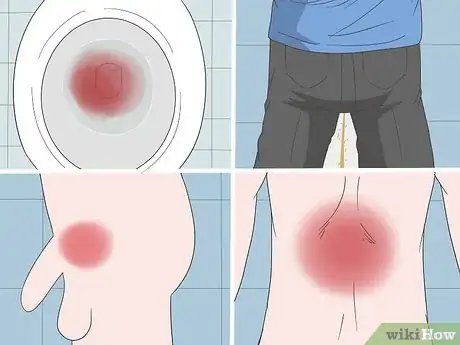
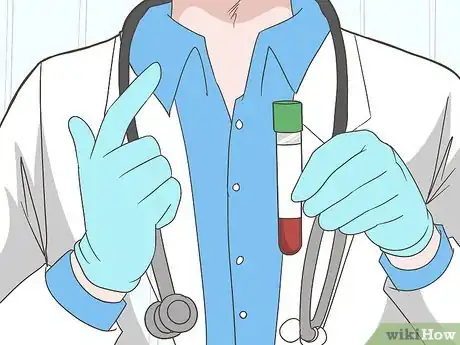
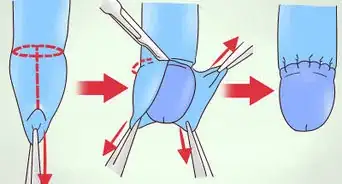
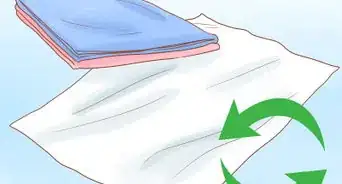
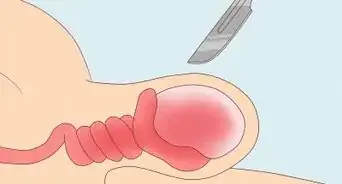







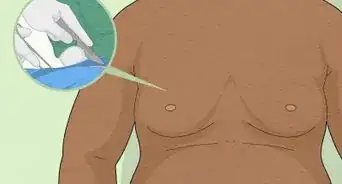











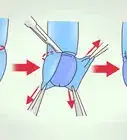
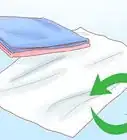
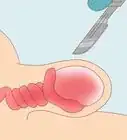
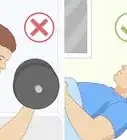



































Medical Disclaimer
The content of this article is not intended to be a substitute for professional medical advice, examination, diagnosis, or treatment. You should always contact your doctor or other qualified healthcare professional before starting, changing, or stopping any kind of health treatment.
Read More...